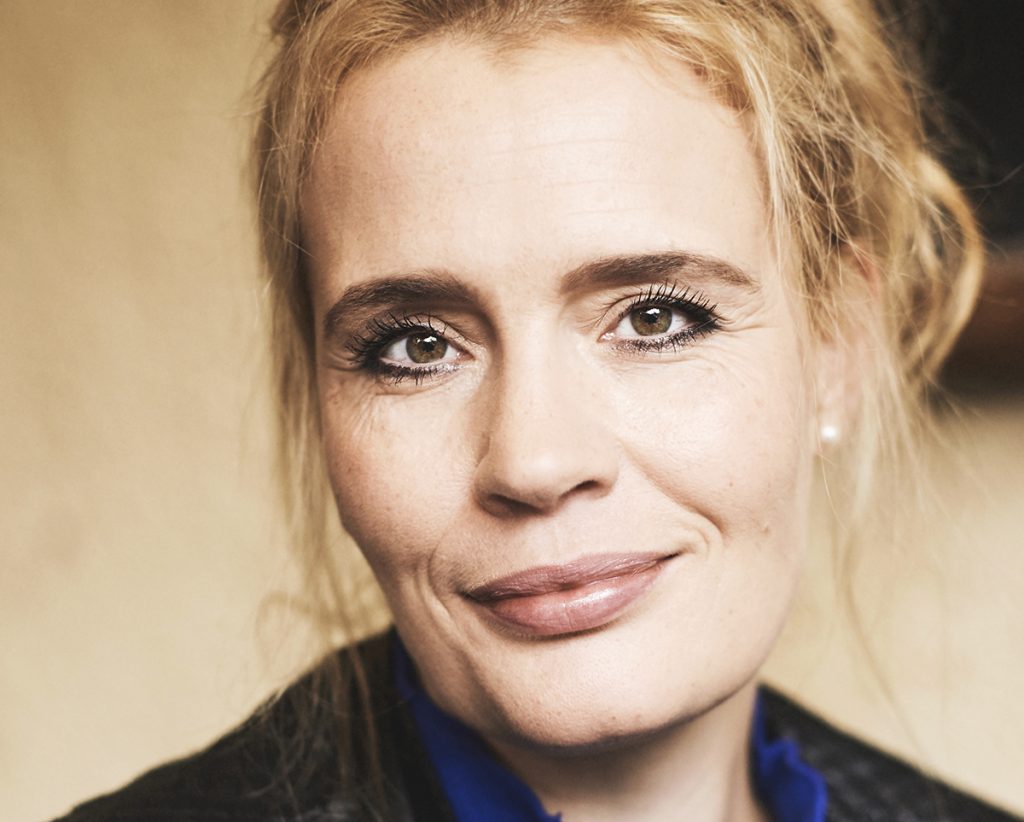
The documentary, A Woman Captured, opens with the image of a sleeping woman, her face lined with wrinkles. She’s struggling to wake up. It’s obvious she’s exhausted, and she herself says she feels like she hasn’t slept at all. Maris, our protagonist, looks ten years older than she is, and there’s a reason for that; beside her full-time job at a factory, she serves an entire family: manages the household, hand washes things, buys groceries, cooks, cleans, prepares the children’s outfits, and feeds the animals. But she’s more than an exploited employee with a low salary; she is a victim of modern-day slavery. She is the servant, of Eta, the head of the family, who takes Maris’s salary every month. Maris cannot leave the house without permission, she has nothing to eat, she cannot see her children, and she is the victim of constant physical and verbal abuse. What makes her most vulnerable is the fact that Eta and the family have used Maris’s personal data to take out a loan, which Maris needs to repay. There are an estimated 36,000 people living in similar conditions in Hungary, 1.2 million in Europe, and 45 million around the world.
The director of this documentary, Bernadett Tuza-Ritter, has written and edited several motion pictures in the last decade. A Woman Captured, her first feature documentary, developed out of a school exercise meant to introduce a person’s day in five minutes, but Tuza-Ritter was so fascinated by Maris’s face, that it became a one-and-a-half-year-long shooting process. In the end, it became the first Hungarian film to compete in the documentary film program at the Sundance Film Festival. For the director it was important to keep the story’s location secret until the end of the film, when we find out that Maris lives in Budapest, not some faraway, impoverished village. This emphasizes the fact that modern-day slavery affects not only developing countries, but is in fact present everywhere, even if it mostly goes unnoticed. The exploited victims have no means of saving money or escaping, and they are paralyzed by years spent living in fear, and having had their self-esteem continuously destroyed. They don’t have access to a phone or the internet to ask for help. Quite simply, as has been the case for Maris in Hungary, they have no one to turn to. The police can’t do anything, and social support services can only get involved in the case of domestic violence. Recognizing this issue, the International Organization for Migration (IOM), together with the National Police Headquarters, have launched a campaign called ‘Don’t let it happen!’, with the aim of eradicating human trafficking in Hungary. As part of the campaign, a 24/7 helpline has been created for the victims, which can be found on the campaign’s website: www.nehagyd.hu.
Tuza-Ritter visited Eta’s house more or less consistently for one and a half years. Eta allowed her to film the documentary on the condition that she remained anonymous and received a fee. Tuza-Ritter managed to visually depict the repressive, dreary atmosphere that surrounds Maris in her daily life. We mostly see her in dark, narrow spaces in the house, carrying out work. Eta’s face is never shown, only her hands and bright pink nails, while we listen to her voice. An interesting parallel shaped the director’s choice for depicting these subjects: animated movies served as a basis for building the characters — the director was inspired by the way evil characters are depicted in Cinderella, for example, or The Little Fox (in Hungarian, Vuk), where hunters are only shown from the hip down.
Maris, however, is shown through deeply expressive imagery: we see her rough, bandaged hands feeding the geese or preparing lunch, but most of the time, the camera focuses on her face. For one and a half hours, the audience follows the changes in her tired, tortured face from an intimately close position. As the film goes on, Maris gradually opens up, and by the time viewers bid her farewell, she has transformed and become liberated.
From the very beginning of the film there is a sense of intimacy and easiness between the director and protagonist—Maris allows her to film her even as she is waking up. Tuza-Ritter noted that gaining this level of trust was the result of a long, gradual process; Maris had completely lost her faith in people after being repeatedly tricked or deceived. Convincing Maris to escape was not the director’s aim, she simply listened to her and continuously reminded her that she is a free person, with every right to go to the store or smoke a cigarette whenever she wants. In short, she was attempting to restore Maris’s dignity.

Bernadett Tuza-Ritter (photo: Marie Claire)
As a result, the idea of escaping and the strength to do so came from Maris herself. The director was prepared to stop shooting at any time. In fact, she did not look for producers until after Maris’s escape. As the film’s editor, Tuza-Ritter was keenly aware of the types of scenes she wanted to shoot and the way she wanted to arrange them, making the film an observational documentary guided by the director’s questions. However, the film evolves according to the dramatic arc of a piece of fiction. At the highpoint of the film, Maris’s escape becomes a shared, cathartic experience for the audience, a fairy-tale turn of events.
We asked Tuza-Ritter about the ethical implications of directing a documentary, as she found herself in a unique position: filming in a household with servants and having the opportunity to help someone escape a hopeless situation. Tuza-Ritter told us that she knew from the outset that she couldn’t take Maris home, or provide work or accommodation for her. She let her use her phone and the internet whenever Maris wanted, and provided moral support for her throughout, even during her escape.
The relationship between Maris and Tuza-Ritter did not end when the director finished filming. Maris attended the film’s premiere at the International Documentary Film Festival Amsterdam (IDFA), and joined the film’s creators onstage. She found the finished film both surprising and touching, and the audience’s reaction reaffirmed her conviction that she had made the right decision.
Currently, Maris lives in a rented apartment with her daughter and grandchild, and dreams of establishing her own cleaning company and living in her own house. Tuza-Ritter says she would like to continue to support Maris in the future, and viewers can do so too, by visiting the film’s official site, awomancaptured.com. The film has been featured at many documentary film festivals in the last year, and has received several awards. Recently, it was ranked among the top 15 films of the European Film Academy, allowing it to qualify for the European Film Award. While Tuza-Ritter appreciates that her film received overwhelmingly positive reviews from the film industry, she is continuously working to raise awareness about modern-day slavery. Her aim is to start a discussion about this invisible issue, one that would attract considerable attention from the public and media. She says her most memorable moment occurred after a screening of the film when a former victim approached her and told her how much the film had meant to them; making the creation of the film worth it for her.
Anna Orosz



